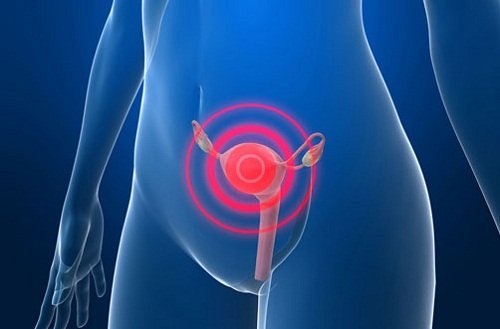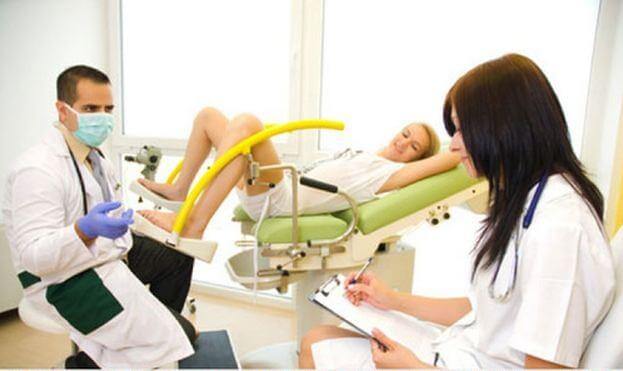3 Reasons to Get A Pap Smear


Written and verified by the doctor Nelton Abdon Ramos Rojas
What is a pap smear?
A pap smear is also known as a pap test. It’s a method that’s used to collect cervical cells in order to analyze them under a microscope. This way, cancerous cells from the cervix can be detected.
Who should get a pap smear?

Every woman that has had sexual relations should get a pap smear. You should get one especially after 21 years of age, and should keep getting them at least once every 3 years until you’re 69 years old.
What is the cervix?
The cervix is an opening at the entrance of the uterus. In other words, it’s the duct that connects it to the vagina during childbirth.
What happens during a pap smear?
- First, a speculum is inserted into the vagina. A speculum is an instrument made of metal or plastic that’s used to keep the vagina open.
- After, a small spatula is used to lightly scrape the mucus off the ectocervix in order to get a small cell sample.
- Finally, a small brush is inserted into the cervix to gather a sample from the endocervix.
Below, we’ll discuss the reasons you shouldn’t hesitate to get a pap smear.
1. Avoid spreading human papillomavirus (HPV)

This virus directly attacks skin cells.
There are different types of HPV. Actually, there are approximately 40 types of viruses that affect the genitals.
Both men and women can contract it. However, it’s alarming to consider that these viruses can lead to uterine cancer in women.
Read also:Treating Human Papillomavirus
What is uterine cancer?
This type of cancer appears mostly in the cervix. However, it can also be in other parts of the body. It usually develops slowly. Abnormal cells take about 10 to 15 years to become cancerous.
Fortunately, pap smears enable us to detect early signs of cancer in the cervix.
Symptoms
According to the World Health Organization (WHO), infections caused by HPV are usually asymptomatic. Unfortunately, what’s worrisome is that if they’re not treated in a timely manner, they can become cancerous.
Advanced symptoms include:
- Abnormal periods and vaginal bleeding,
- Pain felt in the back, legs, and pelvis,
- Fatigue,
- Weight loss,
- Lack of appetite,
- Foul-smelling vaginal discharge,
- Swelling in one leg.
2. They Help Detect cervical inflammation

An inflamed cervix is called cervicitis. The cervix is the lower part of the uterus and runs along the cervical canal. This canal is where menstrual blood passes before it arrives in the vagina.
A pap smear can detect pathological changes, or, if there aren’t any, the presence of cervical mucous.
3. It Can Detect Genital warts

Occasionally, genital warts appear on the outside of the skin folds around the vagina. The warts can be flat or raised. They’re flesh colored and resemble cauliflower.
Warts that are inside the cervix can only be detected with a pap smear, since they don’t usually cause symptoms.
What happens when results are abnormal
Abnormal cervical cells are called dysplasia or precancerous lesions. If they’re detected, the patient has to go to a colposcopy clinic to confirm the diagnosis. Then, she will begin treatment as soon as possible.
Getting ready for a pap smear

- First of all, it shouldn’t be done while you’re on your period. Ideally, it should be performed 5 days after it has finished.
- In addition, don’t use spermicides, tampons, or lubricants that can affect the results.
- Also, avoid vaginal douches for at least 3 days before the test.
- Finally, abstain from having sexual intercourse for the 2 days before the examination.
Preventative measures
- Ask your physician about the HPV vaccine.
- Limit your number of sexual partners.
- Using condoms lowers the risk of contracting HPV.
- Spermicide creams can kill certain bacteria.
- Avoid tobacco use, since it increases the risk of developing cervical cancer.
All cited sources were thoroughly reviewed by our team to ensure their quality, reliability, currency, and validity. The bibliography of this article was considered reliable and of academic or scientific accuracy.
- Pérez M., C. H. (2016). Virus del papiloma humano. Repertorio de Medicina y Cirugía. https://doi.org/10.1016/j.reper.2016.02.002
- Concha R, M. (2007). Diagnóstico y terapia del virus papiloma humano. Revista Chilena de Infectología. https://doi.org/10.4067/S0716-10182007000300006
- Andrés Domingo, P. (2017). Infecciones de transmisión sexual. Pediatria Integral. https://doi.org/10.1016/S0304-5412(10)70220-1
This text is provided for informational purposes only and does not replace consultation with a professional. If in doubt, consult your specialist.








